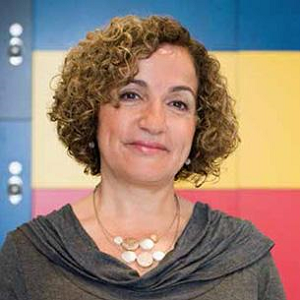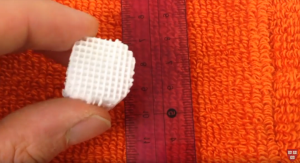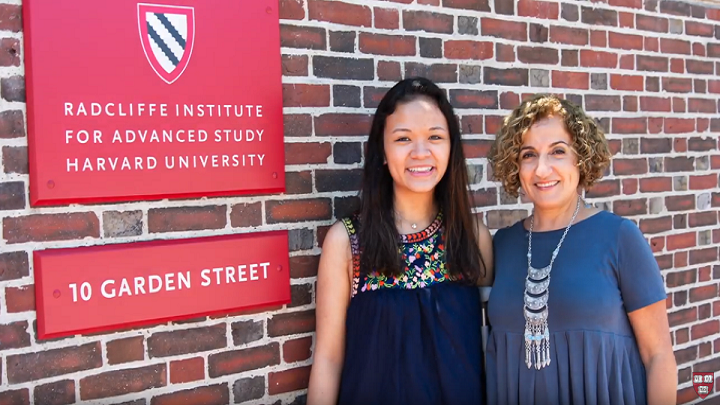Harvard Fellowship Brings Professor and Student Together to Work on 3D Printed Artificial Bone Implants
 Growing up in Jordan, University of Sydney biomedical engineering professor Hala Zreiqat, a 2016-2017 Research Fellow at Harvard University’s Radcliffe Institute for Advanced Study, originally wanted to be an interior designer, but due to the impracticality of studying the subject in the UK, she graduated with a degree in biology because, as she told the Radcliffe Magazine last year, science “is a bit of art.”
Growing up in Jordan, University of Sydney biomedical engineering professor Hala Zreiqat, a 2016-2017 Research Fellow at Harvard University’s Radcliffe Institute for Advanced Study, originally wanted to be an interior designer, but due to the impracticality of studying the subject in the UK, she graduated with a degree in biology because, as she told the Radcliffe Magazine last year, science “is a bit of art.”
Professor Zreigat eventually moved to Australia to pursue her own medical research, and focused her PhD thesis at the University of New South Wales Medical School on making a titanium alloy used in hip replacements more biologically compatible. Later, she established the University of Sydney’s first tissue-engineering lab, while also building an international network of scientists, clinicians, and engineers. Her goal is to provide better treatment options, through the use of substitute bone able to easily incorporate itself into the body, for the millions of people worldwide who suffer bone loss, because metal was never meant to be part of our bodies.
Professor Zreigat asked, “You can have a material that has brilliant mechanical properties, but if it doesn’t do what you want it to do with cells in the body, what’s the point?”
One of these millions of people with bone loss is Linh Nam, a current Harvard College student and Professor Zreigat’s Summer Radcliffe Research Partner.
“When I found out I was hired by Hala to be part of this project, I was really excited and was really looking forward to working with her and hearing from her perspective and contributing my part to this project,” said Nam in a Harvard video.
The project aims to create a biocompatible, artificial material with the same strength and porosity as real bone using 3D printing – a worthy goal shared by many other researchers around the world.
Professor Zreigat said, “The bone substitute my team and I developed is similar in structure and composition to actual bone; mimics the way real bone withstands loads and deflects impacts; and, like real bone, contains pores that allow blood and nutrients to penetrate it.
“The fact that our material actually kick-starts bone regeneration makes it far superior to other available materials. Each patient has only a limited amount of bone available for grafting, so the demand for synthetic bone substitutes is high.”
 As of last year, Professor Zreigat’s team had found a way to generate a porous core of a novel multi-component ceramic using 3D printing. The material is infused with trace elements that are necessary for the formation of bones, like zinc, calcium, and strontium, and is also a good candidate for successfully bridging damaged vertebrae in spinal fusion surgery.
As of last year, Professor Zreigat’s team had found a way to generate a porous core of a novel multi-component ceramic using 3D printing. The material is infused with trace elements that are necessary for the formation of bones, like zinc, calcium, and strontium, and is also a good candidate for successfully bridging damaged vertebrae in spinal fusion surgery.
“I think it’s a great opportunity that Radcliffe has brought us to be able to work together and for me to have this chance to know Hala, who’s a leading expert in her field,” said Nam.
Nam, who is working with Professor Zreiqat to introduce 3D printing to the artificial material for orthopedic applications, explained that she would not be able to have this opportunity elsewhere. But while her talent got her in the door, something else about the young student caught Professor Zreiqat’s eye.
“Linh’s application stood out because of her experience in evolution biology,” Professor Zreiqat explained. “I recall when I read her application that there was osteosarcoma in it, but that’s not what really attracted me to Linh’s. And when she walked into my office she was on crutches, and that’s when I’m going, oh my goodness, that’s the one with osteosarcoma, which is cancer of the bones. And I looked at Linh and she had these long surgical marks on her tibia and femur and that’s when I thought it could not have been a better match of having Linh working on the material.”
Nam was diagnosed with osteosarcoma – a cancerous tumor in the bone – when she was just ten years old, and had to have a section of bone removed from her leg, which, as Nam explained, left “the question of what could be put into that gap.”
Bone from a bone bank was used to fill in the gap left by removing the original bone, and a metal plate was added to hold everything together. According to Nam, there were a lot of complications stemming from the surgery, including the metal parts coming apart and trouble healing, because the bone in the gap was not her own. All in all, she had ten surgeries over a whole decade.
Nam explained, “So I felt that Hala’s project was really meaningful in the sense that it negates the need for metal for patients that have bone defects.”
Professor Zreiqat is a strong advocate for mentoring the younger generation. She has formed strong bonds with many of her ex-research partners, and hopes that this “will be the case with Linh as well.”
These types of fellowships have also allowed her to get some help from new eyes in forging ahead with her innovative research.
“I’m hoping for this medical technology to reach to the patient as close as 2019, and we’re very, very close to that.”
Discuss this story and other 3D printing topics at 3DPrintBoard.com or share your thoughts in the Facebook comments below.
Subscribe to Our Email Newsletter
Stay up-to-date on all the latest news from the 3D printing industry and receive information and offers from third party vendors.
You May Also Like
Gorilla Sports GE’s First 3D Printed Titanium Cast
How do you help a gorilla with a broken arm? Sounds like the start of a bad joke a zookeeper might tell, but it’s an actual dilemma recently faced by...
Nylon 3D Printed Parts Made More Functional with Coatings & Colors
Parts 3D printed from polyamide (PA, Nylon) 12 using powder bed fusion (PBF) are a mainstay in the additive manufacturing (AM) industry. While post-finishing processes have improved the porosity of...
$25M to Back Sintavia’s Largest Expansion of Metal 3D Printing Capacity Since 2019
Sintavia, the digital manufacturing company specializing in mission-critical parts for strategic sectors, announced a $25 million investment to increase its production capacity, the largest expansion to its operations since 2019....
Velo3D Initiates Public Offering in a Bid to Strengthen Financial Foundations and Drive Future Growth
Velo3D (NYSE: VLD) has been among a number of publicly traded 3D printing firms that have attempted to weather the current macroeconomic climate. After posting a challenging financial report for 2023,...

































